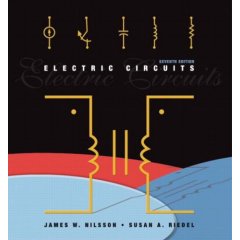Pspice For Linear Circuits Ebook


Download Free eBook:Mathematical Foundations for Linear Circuits and Systems in Engineering - Free epub, mobi, pdf ebooks download, ebook torrents download. PSpice for Circuit Theory and. SYNTHESIS LECTURES ON DIGITAL CIRCUITS AND SYSTEMS #7. 4.2.1 Piece-wise Linear Part (VPWL).
Related Book Ebook Pdf Pspice For Linear Circuits Uses Pspice Version 157: - Home - Algebra 2 Semester 2 Review - Algebra 2 Semester 2 Review Packet.
Find more information about: ISBN: 946 OCLC Number: 48683400 Notes: Includes index. Description: 153 pages: illustrations; 24 cm + 1 CD-ROM (4 3/4 in.) Details: Minimum system requirements: Windows 95, 98, NT or 2000. Getting Started with PSpice. Using PSpice. PSpice Notation -- 2. Analysis of DC Circuits. DC Circuits Containing Dependent Sources.
Mesh and Node Equations. Comparing DC Circuits. Thevenin Equivalent Circuits. Capacitors and Inductors in DC Circuits -- 3. Euphonix Artist Mix Manual. Variable DC Circuits. Global Parameters -- 4. Time Domain Analysis.
The Response of a RC Circuit to a Pulse Input. Piecewise Linear Inputs.
AC Circuits in the Time Domain -- 5. Analysis of AC Circuits.
Coupled Coils. Ideal Transformers -- 6. Frequency Response. Frequency Response Plots -- 7. Fourier Series. Responsibility: James A. More information: • • • Abstract.
Author by: Dennis Fitzpatrick Language: en Publisher by: Newnes Format Available: PDF, ePub, Mobi Total Read: 73 Total Download: 242 File Size: 54,9 Mb Description: Analog Design and Simulation Using OrCAD Capture and PSpice, Second Edition provides step-by-step instructions on how to use the Cadence/OrCAD family of Electronic Design Automation software for analog design and simulation. The book explains how to enter schematics in Capture, set up project types, project libraries and prepare circuits for PSpice simulation. There are chapters on the different analysis types for DC Bias point, DC sweep, AC frequency sweep, Parametric analysis, Temperature analysis, Performance Analysis, Noise analysis, Sensitivity and Monte Carlo simulation. Subsequent chapters explain how the Stimulus Editor is used to define custom analog and digital signals, how the Model Editor is used to view and create new PSpice models and Capture parts and how the Magnetic Parts Editor is used to design transformers and inductors. Other chapters include Analog Behaviorial models, Test Benches as well as how to create hierarchical designs.
The book includes the latest features in the OrCAD 17.2 release and there are exercises with step by step instructions at the end of each chapter that enables the reader to progress based upon their experience and knowledge gained from previous chapters. In addition, there are new chapters on the PSpice Advanced Analysis suite of tools: Sensitivity Analysis, Optimizer, Monte Carlo, and Smoke Analysis.The chapters show how circuit performance can effectively be maximised and optimised for variations in component tolerances, temperature effects, manufacturing yields and component stress.
Provides both a comprehensive user guide and a detailed overview of simulation using OrCAD Capture and PSpice Includes worked and ready to try sample designs and a wide range of to-do exercises Covers Capture and PSpice together. Author by: Paul Tobin Language: en Publisher by: Morgan & Claypool Publishers Format Available: PDF, ePub, Mobi Total Read: 92 Total Download: 177 File Size: 40,7 Mb Description: In PSpice for Analog Communications Engineering we simulate the difficult principles of analog modulation using the superb free simulation software Cadence Orcad PSpice V10. Be As Wise As Serpents Pdf. 5.
While use is made of analog behavioral model parts (ABM), we use actual circuitry in most of the simulation circuits. For example, we use the 4-quadrant multiplier IC AD633 as a modulator and import real speech as the modulating source and look at the trapezoidal method for measuring the modulation index. Modulation is the process of relocating signals to different parts of the radio frequency spectrum by modifying certain parameters of the carrier in accordance with the modulating/information signals.